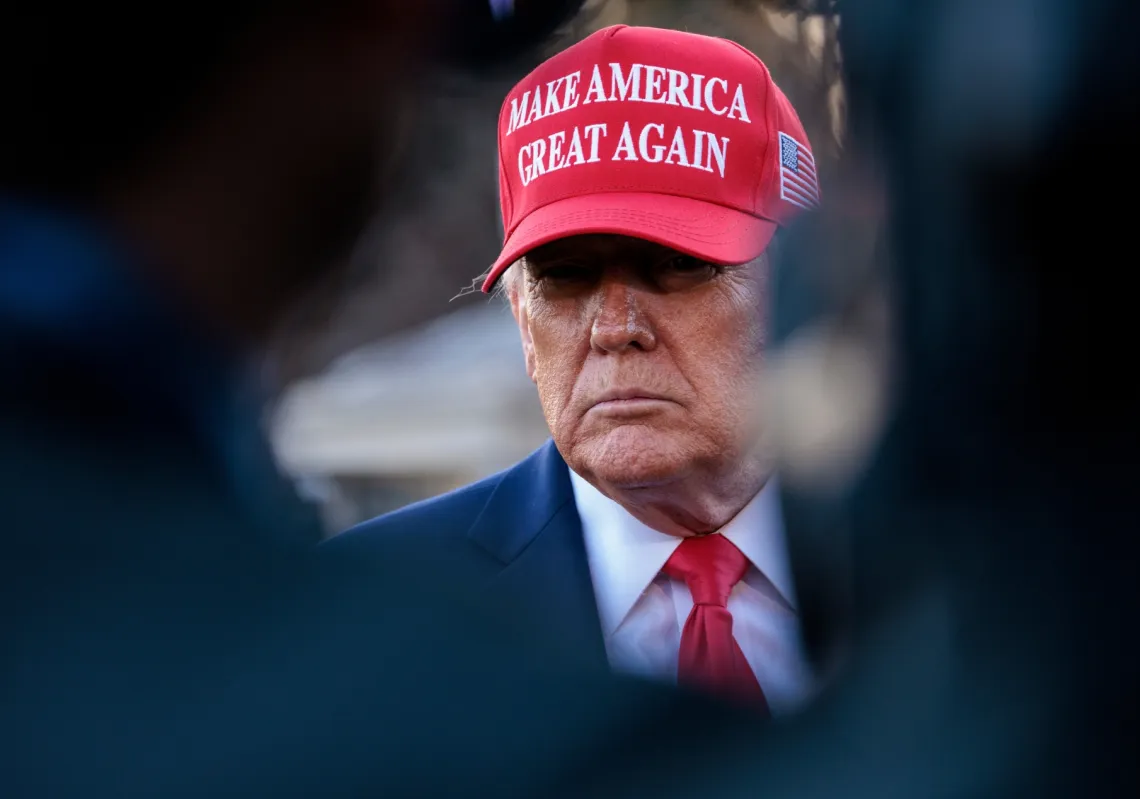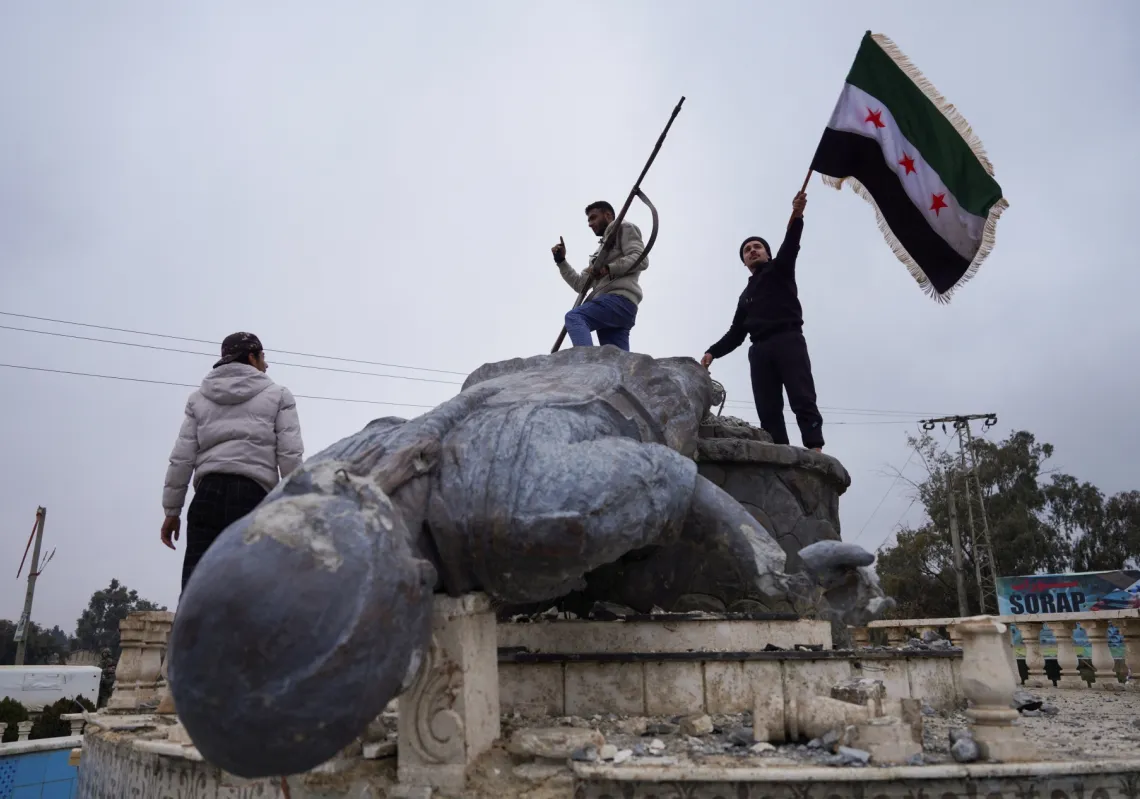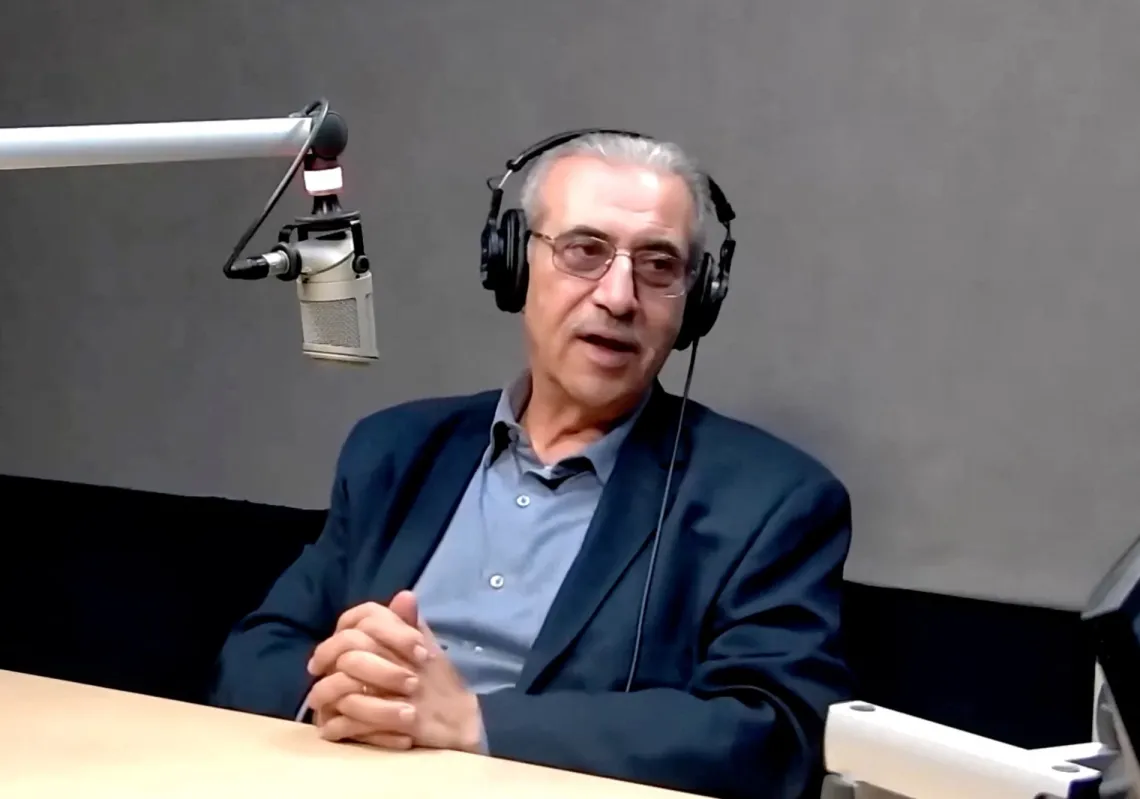Across the Middle East, there are six active conflict zones and other areas where tensions and grievances could ignite at any time. In such a neighbourhood, where peace and stability are prized assets, long-term economic planning can be a luxury.
Of the rare few regional states to have put forward and moved towards an economic vision, Saudi Arabia’s Vision 2030 stands out. Yet the Kingdom does not exist in a bubble. It, too, is having to adapt and roll with the times. Launched eight years ago, this bold and ambitious national plan set a new Saudi course, weaning the country off its reliance on oil sales and diversifying its industries.
High oil prices since Russia’s invasion of Ukraine in February 2022 initially helped pay for much of the changing infrastructure, but the world today looks different. Oil prices have fallen, the budget deficit has increased, trade has been impacted by conflict, and belts have generally tightened. This has led Saudi Arabia, like other nations, to reassess some of its plans and priorities, with financial planners advocating the wisdom of re-evaluating each project’s economic feasibility as conditions change and the horizon’s clouds darken.
Looking afresh
The Kingdom’s projects, launched with great fanfare and momentum, have budgets that total hundreds of billions of dollars. Many are investments in infrastructure that are strategic in nature, laying the groundwork for the nation’s long-term development. Major economic transformations take time, and adaptations are needed along the way. For the Kingdom’s completion of these projects, some may need to be scaled back, while others may be expanded.

Those views were echoed by Finance Minister Mohammed Al-Jadaan during a conference in April. “Vision 2030 has contributed to shaping the Kingdom’s economic plans, focusing on diversifying the economy beyond oil and prioritising qualitative over quantitative growth,” he said.
“What matters to us is the growth of the non-oil economy and enhancing the role of the private sector. If we wanted, we could produce 10 million barrels per day (bpd) of oil instead of 9.5 million bpd, achieving a much greater increase in GDP.”
Saudi Arabia’s reprogramming shows maturity in worsening conditions in which peers have also struggled. The United States, with its colossal economy, has spent two years raising bond yields to historic levels, accumulating debts nearing $35tn, before finally reducing interest rates by half a point last month.
Economic adaptation
When assessing the Kingdom’s investments, several factors need to be considered, including potential risks. Global economic shifts are being driven by events and policies that compel countries to adapt their resources, tools, and strategies. Saudi Arabia’s investment in the future has not been limited to infrastructure, but includes new legislation, regulations, systems, training, and technology. Alongside that has been an effort to attract foreign investment, to advance its vision of good governance, sustainability, and reliability of execution.

These foundations were highlighted by the launch of Vision 2030 in 2016, the creation of the Public Investment Fund (PIF) in 2017, and the introduction of the National Investment Strategy in 2021. According to the latest annual report assessing progress, 87% of the proposed initiatives have been completed, and 81% of key performance indicators (KPIs) now meet their targets.
Saudi Investment Minister Khalid Al-Falih said: "Many doubted the Vision's ambition, breadth, depth, and inclusiveness, questioning whether a country like Saudi Arabia—which has relied on oil for decades—could achieve what it aspires to."
PIF as the engine
The establishment of the PIF has been the primary driver for meeting the needs of Vision 2030, attracting foreign investments, and enhancing local content by increasing the private sector's contribution to its portfolio to 60% by the end of 2025. Vision 2030 aims to raise the share of GDP that comes from the Saudi private sector to 65% by 2030. It is currently around 45%, according to Saudi Economy and Planning Minister Faisal Alibrahim.

The fund has invested in establishing leading national companies across sectors like financial services, aviation, tourism, and industry, including Riyadh Air, Ma'aden mining company, Savvy Games Group, and Lucid Motors for electric vehicles. The PIF has invested tens of billions of dollars in acquiring stakes in foreign assets or purchasing them outright, along with significant investments in US and European stock markets. It ranks sixth globally among state-owned investment organisations, according to the Sovereign Wealth Fund Institute.
Regional upheaval and impacted oil prices (despite voluntary production cuts) have necessitated a focus on specific investment areas to bolster Saudi Arabia's development in line with its evolving needs. As part of this, giant US asset manager BlackRock secured a $5bn investment from the PIF to establish a new investment company in Riyadh, with a primary focus on developing Saudi capital markets.
In February, the PIF launched Alat, a company aimed at transforming the Kingdom into a global hub for sustainable tech manufacturing. Its scope is vast but includes semiconductors, healthcare devices, gaming products, network equipment, EV charging facilities, and battery storage solutions. Alat plans to create over 39,000 jobs by 2030 by manufacturing over 30 product categories serving vital sectors such as robotics, communications, advanced computing devices, and digital entertainment. The advanced industries it focuses on, particularly electricity and clean energy, align with the goals of Vision 2030.
A national strategy
Following the creation of the PIF, the National Investment Strategy (NIS) was launched in 2021 as a crucial enabler for Vision 2030. Goldman Sachs estimates that up to $1tn could be spent domestically by 2030 on investments in clean technology, metals and mining, transportation, logistics, digital transformation, and energy. The strategy aims to enhance the role of foreign direct investment (FDI), which is expected to grow to 34% of the GDP by 2025 and 57% by 2030. One of the aims is to create jobs and reduce unemployment to below 7%. In 2023, FDI in Saudi Arabia totalled about $19.3bn. These investments are expected to increase local content to 57%, provide around 2 million jobs, and boost non-oil exports to around $155bn by 2030.

One of the strategy's core pillars is the Shareek Programme, which aims to increase local investment by private sector companies (both listed and unlisted) to $13tn by 2030. The programme includes 28 private companies and seeks to raise non-oil exports to 50% of the GDP from the current 16%.
A key aspect of the NIS is enhancing the business environment through major regulatory and legislative reform, incentivising various projects and attracting multinational companies to Saudi Arabia by providing legal protection, political stability, and appropriate administrative facilitation.
The Regional Headquarters Programme (RHQ) had attracted over 300 foreign companies by the end of 2023. During the first quarter of 2024, about 127 global companies relocated their regional headquarters to Saudi Arabia, a 477% increase over the previous year. More than 400 international companies now have licenses to open regional offices in the Kingdom, including tech giants like Amazon, Alphabet, Google, and Microsoft, consulting firms like PwC and Deloitte, consumer firms like PepsiCo and Unilever, and big investment banks like Goldman Sachs.
Another element of the strategy is the creation of special economic zones (SEZs) like King Abdullah Economic City, Ras Al Khair, and Jazan. There are specific SEZs for cloud computing and logistics. These zones offer competitive regulations and incentives to attract investment in priority sectors and relocate strategic supply chains to the Kingdom, assisting with industrial diversification and potentially propelling Saudi economy into the world's top 15.

The NIS integrates with other strategic frameworks, including those in the industrial, logistics, and tourism sectors, as well as the National Strategy for Data and Artificial Intelligence, which aims to attract investments of around $20bn. The Kingdom is nurturing a tech ecosystem of around 300 start-ups in this field and plans to acquire high-performance chips from NVIDIA to develop and operate the most advanced AI models.
Other sectors of focus include education, governance, healthcare, energy, and mobility, showing the Saudi government's commitment to achieving economic diversification.
Another demonstration of this came in the recent reforms aimed at reducing bureaucracy, incentivising investors, and simplifying licensing procedures. For instance, investors now only need to register their projects once, rather than multiple times for multiple different licenses. Another revision was to guarantee equal treatment between local and foreign investors.
The reforms also emphasise "freedom to conduct investment activities, the free transfer of capital without delay, and ensuring the protection of intellectual property and trade secrets." The upgrade by Standard & Poor's of Saudi Arabia's outlook from 'stable' to 'positive' is seen as a vote of confidence in the reforms, including the Kingdom's ability to attract foreign money by creating a favourable investment environment.

New thinking
Saudi authorities have recognised the role of the Kingdom's 13.4 million expatriates (comprising 41.6% of the population) in driving change, such as by redefining employment relationships with regulations that safeguard the interests of both workers and employers.
This move to improve the contractual relationship was launched in 2020 and effectively abolished the former sponsorship system. The new system gives expat workers the right to leave the country permanently at the end of their contracts, free from the control of companies or individuals.
Among the most prominent Saudi economic reforms was the initial public offering (IPO) of Saudi Aramco shares in 2019 and a subsequent offering in June 2024. This generated huge interest from foreign investors and raised $42bn, giving the kingdom a significant financial boost and enhancing its credibility, both in terms of its direction and its ability to deliver on its promises. Future IPOs may be considered, with Saudi Arabia set to host Expo 2030 and possibly the World Cup 2034 alongside the Asian Football Cup in 2027 and the Asian Winter Games in 2029.
Those pivoting the Saudi economy away from oil have been reviewed positively by the International Monetary Fund (IMF). Its mission chief to Saudi Arabia, Amine Mati, described the speed and scale of economic progress as "unprecedented". Non-oil segments of the Saudi economy are expected to grow by 4.4% over the medium-term, driven by the PIF increasing its annual investment from $40bn to $70bn starting in 2025, Mati said.

Overall growth is in line to hit 4.7% in 2025 before averaging 3.7% annually thereafter. Despite a contraction in overall growth by 0.8% due to reduced oil production, there was still notable growth of the non-oil GDP. The IMF's endorsement of the Kingdom's approach to reassessing its investment spending reflects the importance of managing risks. Despite the Kingdom's inclination to borrow as part of its integrated financing strategy, the IMF expects the debt-to-GDP ratio to rise to about 36% by 2029, still below the debt ceiling of 40% of GDP set by the Kingdom.
When discussing Saudi Arabia's economic diversification, Mati highlighted three distinctions: diversification in terms of GDP, revenue, and exports. He said: "Oil now accounts for 30% of the economy, down from 50% a decade ago. Non-oil revenues have doubled over the past five years, from 6% of the non-oil GDP to 12%. The share of oil in total revenues has dropped to around 60%, from 80% in the past, and oil's share of export dollars is now about 75%, down from nearly 90%."
Mati added that "significant progress has been made towards non-oil growth" while also noting historic low Saudi unemployment rates, a deceleration in the annual inflation rate to 1.6% in May 2024, and the resilience of its economy in a conflict-hit region. The strength of the local banking sector has helped the Kingdom withstand shocks.
Drawing towards the end of 2024, Saudi Arabia heads into 2025 with recalibrated yet sharpened ambitions, enhanced credibility, and greater capacity to manage crises, not least those erupting on its doorstep.











